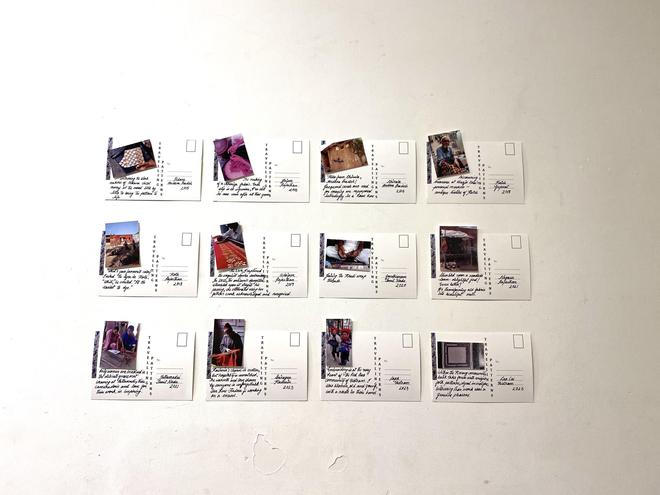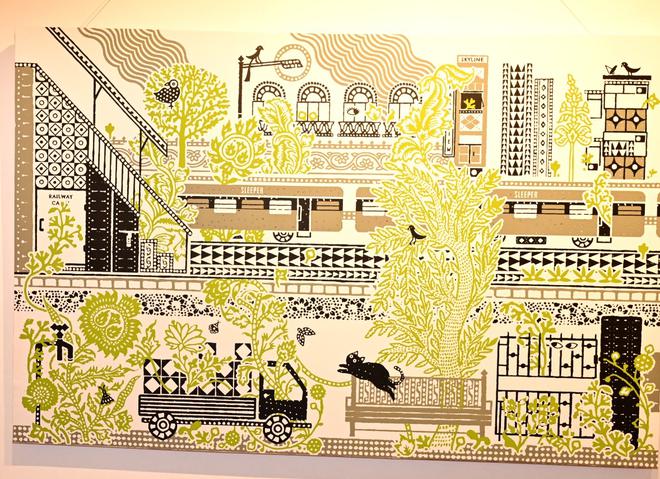The walls of DakshinaChitra’s Varija Gallery are vibrant with different iterations of kalamkari, from fabric to graphic design. What emerged as a form of dyeing fabrics in Masulipatnam has been rebirthed by four artists whose work has come together to create the exhibition, Travelling Patterns.
Walking in, the first thing to catch your eye is the giant chintz prints displayed in the centre, the result of a collaborative design by the artists who have displayed at the exhibit.

“In November of last year, four artists — Aditi Jain, Henning Wagenbreth, Ruchi Shah and Verena Gerlach —had several workshops, discussions, and presentations in Chennai, and were introduced to the Masulipatnam style of kalamkari. This inspired them to create their designs,” says curator Prarthana Kartikeyan.
The work displayed puts into perspective the influence of kalamkari not just on the global landscape, but also across different mediums of art. The chintz prints, Kartikeyan says, were ordered from Rijksmuseum in Amsterdam and have been displayed in the central courtyard.
On either side of the chintz display, is a modern interpretation of kalamkari with Chennai-based artist Aditi Jain’s multimedia work on the left and Berlin-based Henning Wagenbreth’s graphic design pieces on the right. Aditi depicts the sari weaving process using photographs on different postcards, while Henning uses bold colours and focusses on the theme of travelling.
Further into the gallery, Ruchi Shah and Verena Gerlach’s work is displayed. “The contrasting colours of Mumbai-based Ruchi’s work, inspired by climate change, brings you in to experience how a city would look if it was completely green or completely grey,” says the curator.

Next to her images is Berlin artist Verena Gerlach’s interpretation of the Chennai coast incorporating different hues of blue with the traditional block printing style. To immerse the viewer, a sandbox has been placed in front of the work, encouraging the viewer to step inside and experience Verena’s work, as though on a beach.
“These artists from different backgrounds, use the traditional practice of kalamkari as a springboard to make such diverse iterations,” says Anitha Pottamkulam, art director, DakshinaChitra.
There are also kalamkari blocks placed next to white fabric which has been stamped in various colours by visitors experimenting with the printing process.
The exhibition has been curated in collaboration with Goethe-Institut Chennai and a book based on this will be published by Tara Books. IThe exhibition will be on at DakshinaChitra Heritage Museum until January 21.







